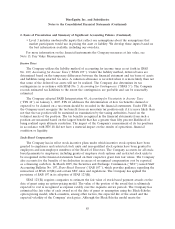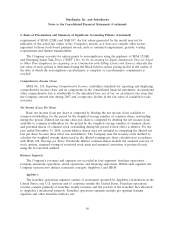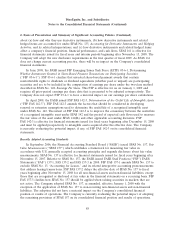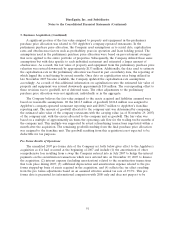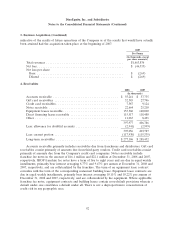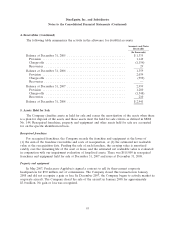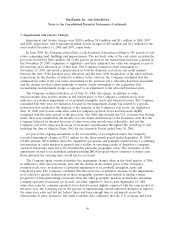IHOP 2008 Annual Report Download - page 101
Download and view the complete annual report
Please find page 101 of the 2008 IHOP annual report below. You can navigate through the pages in the report by either clicking on the pages listed below, or by using the keyword search tool below to find specific information within the annual report.DineEquity, Inc. and Subsidiaries
Notes to the Consolidated Financial Statements (Continued)
2. Basis of Presentation and Summary of Significant Accounting Policies (Continued)
The company restaurant operations segment consists of company-operated restaurants in the
United States and China. Company restaurant sales are retail sales at company-operated restaurants.
Company restaurant expenses are operating expenses at company-operated restaurants and include
food, labor, benefits, utilities, rent and other restaurant operating costs. The operating results of this
segment are substantially generated by Applebee’s restaurants.
Rental operations activities are not currently a significant part of Applebee’s business. This activity
relates only to the franchising of the restaurants; Applebee’s is not entering into rental operations
similar to those of IHOP.
Financing operations activities are not currently a part of Applebee’s business.
IHOP
The franchise operations segment consists of restaurants operated by IHOP franchisees and area
licensees in the United States, one U.S. territory and two countries outside the U.S. Franchise
operations revenue consists primarily of franchise royalty revenues, sales of proprietary products,
franchise advertising fees and the portion of the franchise fees allocated to IHOP intellectual property.
Franchise operations expenses include advertising expense, the cost of proprietary products and
pre-opening training expenses and other franchise-related costs.
The company restaurant operations segment consists of company-operated restaurants in the
United States. In addition, from time to time, restaurants that are reacquired from franchisees are
operated by IHOP on a temporary basis. Company restaurant sales are retail sales at company-
operated restaurants. Company restaurant expenses are operating expenses at company-operated
restaurants and include food, labor, benefits, utilities, rent and other restaurant operating costs.
Rental operations revenue includes revenue from operating leases and interest income from direct
financing leases. Rental operations expenses are costs of operating leases and interest expense on
capital leases on franchisee-operated restaurants.
Financing operations revenue consists of the portion of franchise fees not allocated to IHOP
intellectual property, sales of equipment, as well as interest income from the financing of franchise fees
and equipment leases. Financing expenses are primarily the cost of restaurant equipment.
New Accounting Pronouncements
In December 2007, the FASB issued SFAS No. 141 (revised 2007), Business Combinations
(‘‘SFAS 141(R)’’). SFAS 141(R) establishes principles and requirements for how an acquirer recognizes
and measures in its financial statements the identifiable assets acquired, the liabilities assumed, any
noncontrolling interest in the acquiree and the goodwill acquired. SFAS 141(R) also establishes
disclosure requirements to enable the evaluation of the nature and financial effects of the business
combination. SFAS 141(R) is effective for fiscal years beginning after December 15, 2008. The
Company will adopt SFAS 141(R) in the first quarter of fiscal 2009 and apply the provisions of this
statement for any acquisition after the adoption date. The Company is currently evaluating the
potential impact, if any, of the adoption of SFAS 141(R) on our consolidated financial statements.
In March 2008, the FASB issued SFAS No. 161, Disclosures about Derivative Instruments and
Hedging Activities (‘‘SFAS 161’’). This statement requires companies to provide enhanced disclosures
87










